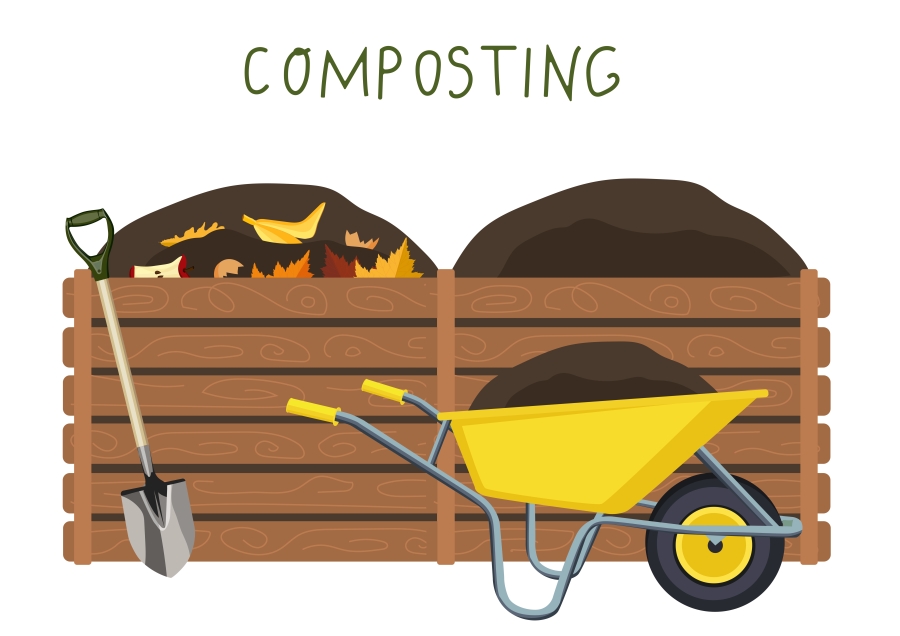What kinds of things can be sent to that compost pile you’re excited to start?
To get the ball rolling, here are a dozen things that you can either safely divert from the landfill into your backyard composting efforts or send off to a communal pile elsewhere.
From the kitchen
• Fruit scraps (think apple cores, orange and banana peels, melon rinds and strawberry tops)
• Vegetable trimmings (such as avocado skins, pepper cores and stems, Brussels sprouts trimmings and eggplant peels)
• Tea bags (no nylon bags)
• Coffee grounds and filters
• Eggshells (but just the shells)
From the yard and garden
• Leaves and pine needles (but mixed with other ingredients to avoid matting)
• Old potting soil
• Grass clippings (mixed with other ingredients so they don’t turn into a compacted mat. Also note that grass clippings are a great natural fertilizer if left on the lawn.)
• Shredded newspaper, paper and cardboard (except for slick or glossy papers)
• Wood chips, sawdust and ash (from untreated wood only, such as cut trees)
• Houseplants, flowers and outside plant trimmings chipped or cut into 2- to 3-inch pieces
• Aged (left in the sun for about three weeks) manure and bedding from cows, horses, goats and chickens. Always inquire about the food and medication the animals receive before you use their manure, to keep things like steroids and antibiotics out of your compost. Rabbit manure has lower nitrogen but can also be used.
What to avoid
If you’re baby-stepping into composting for the first time, the do’s and don’ts of what goes into the bin might seem daunting.
To flatten the learning curve, we’ve compiled two reference lists — one of things that should never go in the compost pile and another of items that should only go in “hot” compost piles (more about that below) — to help guide you.
Compost no-nos
The following items should never be placed in any compost pile (or organic waste bin, for that matter):
• Plastic anything — including “compostable” plastics
• Poop from meat-eating animals like dogs and cats (this includes kitty litter)
• Fresh manure from animals such as racehorses treated with steroids, antibiotics or other medications
• Magazines or other glossy paper products
• Hygiene products (think soiled diapers and wipes)
• Charcoal barbecue ashes
For ‘hot’ compost only
Hot composting needs the compost pile to reach an internal temperature of 130 to 150 degrees (to kill the pathogens that meat, dairy and diseased plants produce), so if you’re trying this at home you’ll need to invest in a compost thermometer and more time than you’d need with casual composting.
The items below can go into a hot compost pile at home or most municipal food waste/organic waste bins, where they will be sent to facilities that use hot composting techniques. (Note that rules vary by city or town, so check with your jurisdiction to make sure these are items they will accept.)
• Diseased or moldy plant trimmings and weeds with seeds
• Food-soiled paper (including broken-up pizza boxes)
• Cheese and other dairy products
• Meat (including fish) and bones
• Cooked foods like grains or pastas
• Cooking oils/grease
— Jeanette Marantos



